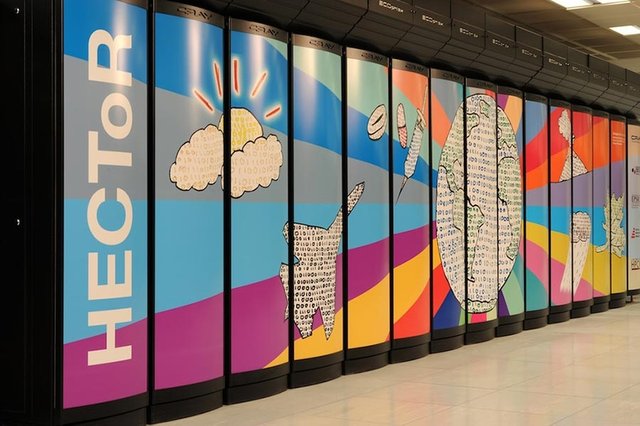SteemBlue: The Idea of Micro-Witnesses And A Steemit Blockchain Supercomputer.
Bringing supercomputers to the blockchain
We all know the role of witnesses on Steemit is to run the network and mine the blocks that make up our posts and comments on Steemit. Hello to all the Steemit newbies to the blockchain. My last few weeks has been spent explaining it to many new minnows on here.
My idea here now is to allow all Steemians to join a micro-witness program where they can allow their spare CPU and GPU capacities to work on a humanitarian project of Steemit consensus choice.
This would be a great corporate boon for Steemit and Steemit Inc. as it gives back to society. Corporate ethics if you like. The idea was inspired by IBM's World Community Grid of which I am a member. I also encourage you to join this great project at:
https://www.worldcommunitygrid.org

Edinburgh University's HECTOR Supercomputer
The rise of the micro-witness
The role of the micro-witness would not be to mine blocks, but more to download and process the current humanitarian project that SteemBlue is currently working on on the blockchain.
There would also be the chance to allow witnesses to delegate Steemit work to SteemBlue during very busy block times.
This technology would also move us from cloud based technologies to blockchain technology.
Three of the world's top fifty supercomputers are based here in Scotland at my old Edinburgh University, and I still have a few contacts there and have a great personal interest in supercomputing:
https://www.epcc.ed.ac.uk/blog/2013/11/21/epcc-hosts-three-supercomputers-worlds-top-50
This is something we can do that is both corporate good, and fulfils Steemit's ethos beyond the boundaries of our own community, and out into the greater world of the non-blockchain: the greater humanity.
Steemit Inc. please consider this proposal for corporate ethical purposes.
I remain, the humble
@mindhunter (micro-witness)
Awesome idea my dear @mindhunter. However, the implementation would probably be anything but easy.
It's only impossible ... until someone does it :-)
Didn't say it's impossible. It's just not easy. Fighting hunger, poverty and diseases is not impossible either. It's just veeeeeeeeeery hard.
In fact the BOINC technology behind World Community Grid is pretty simple to be honest. Blockchain technology could simply that process ever further!
Simple? How is creating a global network of connected computers with the goal of harnessing computational power to advance science simple?
With all due respect: You are not a programmer, are you? ;-)
The BOINC software is simply coded for the cloud - there are no advanced features. Each user downloads their own copy, then connects to the projects server to download the work. Setting up the servers for the work distribution is the toughest bit if anything. Expert linux skills are required there, but once it's all setup its done :)
Well, using BOINC isn't hard. You're right about that. However, creating (any kind of) software which is powerful and easy-to-use at the same time is a very hard task.
BOINC was coded quite quickly at Berkeley by some clever dudes. It's not rocket science for programmers this one to be honest. Ethereum smart contracts are a 100x more difficult!!
https://boinc.berkeley.edu/projects.php